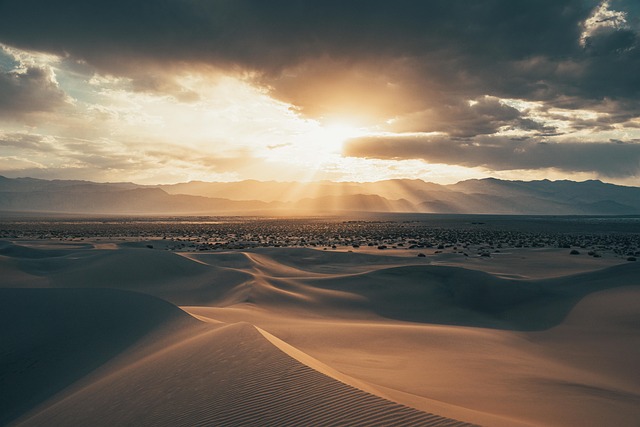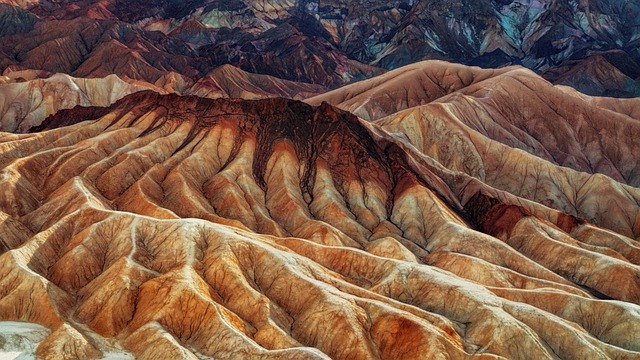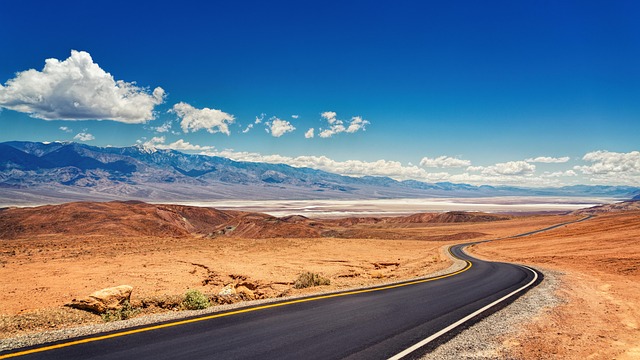It’s a perfect storm of geography. The valley is long, narrow, and deep, with high, steep mountain ranges on either side.
- Below Sea Level: Much of the valley floor is below sea level, which means the air pressure is higher, and that air heats up more.
- Trapped Heat: The high valley walls trap the hot air, which sinks and is reheated by compression.
- Aridity: With minimal vegetation and rainfall, there’s no moisture to provide evaporative cooling. The sun’s energy is absorbed entirely by the dry rock and soil, which then radiates that heat back into the air.
The result is a superheated oven. In summer, the ground temperature can be hot enough to cause third-degree burns if you fall.

Your Survival Guide: How to Plan for Extreme Heat
Your safety in Death Valley comes down to three things: your timing, your gear, and your vehicle.
1. Rule #1: When to Go (and When Not to Go)
This is the most important decision you will make.
- The Best Time: The ideal time to visit Death Valley is from late October to mid-April. Temperatures are pleasant, ranging from the 60s to 80s°F (18-30°C). Spring (March/April) is especially popular, as a wet winter can trigger a spectacular, park-wide wildflower bloom.
- The “Danger Zone” (Summer): Visiting between May and September is strongly discouraged for anyone not experienced in extreme desert survival. Most hiking trails are considered unsafe after 10 a.m. Park rangers post warnings for a reason. If you must go in summer, all your sightseeing should be done from your air-conditioned car or in the brief, cooler windows after sunset and before sunrise.

2. The Holy Trinity of Hydration: Water, Water, and More Water
You cannot overpack water. The official National Park Service (NPS) recommendation is to carry at least one gallon (4 liters) of water per person, per day.
Pro Tip: This is a minimum. If you plan on any physical activity, even a short walk, you need more.
- Don’t Wait: Drink before you feel thirsty. By the time you’re thirsty, you are already dehydrated.
- Pack Electrolytes: Your body isn’t just losing water; it’s losing salt. Pack sports drinks, electrolyte tablets, or salty snacks (like pretzels and trail mix) to replenish what you’re sweating out.
3. Your Vehicle is Your Lifeline
In the vast, remote expanse of Death Valley, your car is more than transport—it’s your primary shelter. There is virtually no cell service in the park. You cannot call for help.
- Fuel Up: Fill your gas tank in Beatty, Pahrump, or Lone Pine before entering the park. Gas stations inside the park (Furnace Creek, Stovepipe Wells) are few and far between and extremely expensive.
- Check Your Car: Make sure your AC is working, your tires are properly inflated (heat expands the air in them), and your coolant is topped off.
- Stay With Your Vehicle: If your car breaks down, DO NOT LEAVE IT to go looking for help. You will succumb to the heat long before you find anyone. A stationary car is much easier for a ranger or another driver to spot than a person. Stay in the shade of your car and wait for rescue.
4. Know the Signs of Heat Illness
This can happen frighteningly fast. You must be able to recognize the signs in yourself and your travel partners.
- Heat Exhaustion (Serious): Dizziness, nausea, heavy sweating, headache, weakness, and cool, moist skin.
- What to do: Move to a cool place immediately (your AC-blasting car). Sip water or an electrolyte drink. Loosen your clothing.
- Heat Stroke (A Life-Threatening Emergency): Confusion, disorientation, high body temperature (over 103°F / 39.4°C), and a lack of sweating. The skin will be hot and dry.
- What to do: This is a 911 emergency (if you can get a signal). Move the person to the shade immediately. Use whatever water you have to douse their clothes and body to cool them down.
What to See: The “Worth It” Adventures

If you’ve prepared correctly, you’re ready for the reward. Here are the must-see spots (best attempted in the morning or late afternoon):
- Zabriskie Point: The single best place to watch the sunrise. The morning light illuminates the golden, rippled badlands in a way that feels otherworldly.
- Badwater Basin: The lowest point in North America. Walk out onto the vast, crunchy salt flats and look back at the cliffside to see the “Sea Level” sign high above you.
- Mesquite Flat Sand Dunes: Visit for sunrise or sunset. The soft light creates dramatic shadows on the dunes, and you might even spot tracks from the nocturnal wildlife.
- Artists Palette: A one-way scenic drive through canyons stained with mineral deposits of green, pink, and purple.
Your Death Valley Packing Checklist
Don’t leave home without these.
- Water: At least 1 gallon (4 liters) per person, per day.
- Extra Water: A few extra gallons to keep in your car in case of a breakdown.
- Food: Salty snacks and non-perishable food.
- Sun Gear: A wide-brimmed hat (not a baseball cap), UV-blocking sunglasses, and high-SPF sunscreen.
- Clothing: Lightweight, loose-fitting, light-colored clothes that cover your skin.
- Navigation: A paper map. Your car’s GPS and your phone’s map will fail. The park visitor center provides an excellent one.
- First-Aid Kit: Include basics plus blister care and tweezers (for cacti).
- Portable Power Bank: To keep your phone charged for photos, as searching for a signal will drain your battery.
Conclusion: Respect the Extreme
Death Valley is not a theme park. It’s one of the last truly wild, unforgiving landscapes on the planet. But its superlatives—hottest, driest, lowest—are exactly what make it so spectacular.
By respecting the heat, planning meticulously, and carrying the right supplies, you can turn a survival mission into an unforgettable adventure.
Are you planning your own #DeathValleyAdventure? Share your top preparation tip or the spot you’re most excited to see in the comments below!


